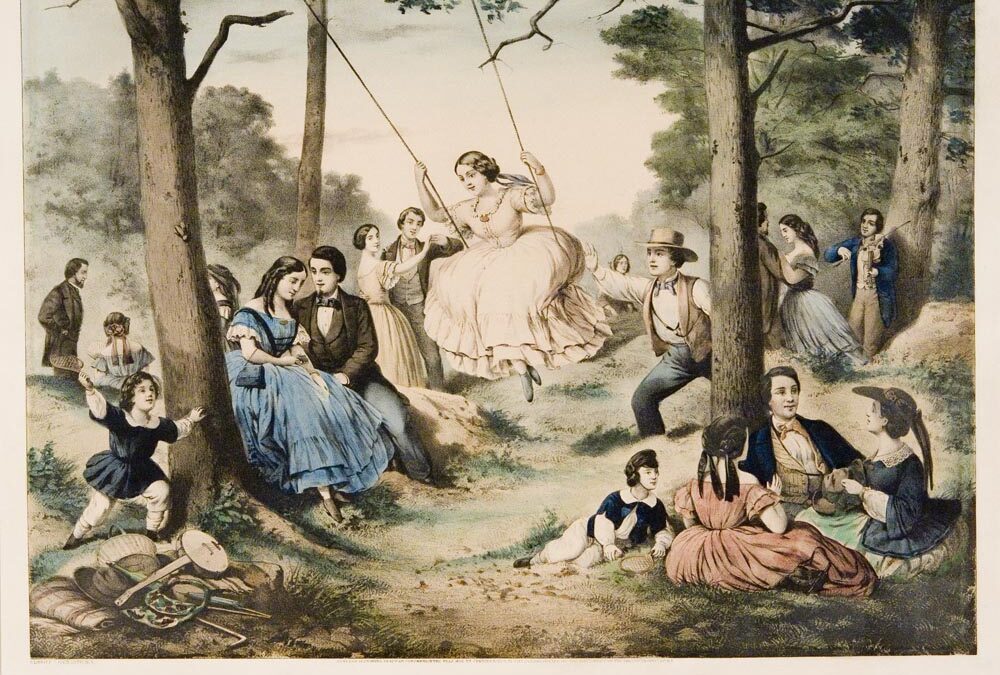 Nathaniel Currier and James Merritt Ives’ lithographs The Pic-Nic Party and The Childrens Pic-Nic are picnics without food or drink. In The Pic-Nic Party, the central figure is a woman on a swing pushed by a young man, probably her beau. Just in front of her is a...
Nathaniel Currier and James Merritt Ives’ lithographs The Pic-Nic Party and The Childrens Pic-Nic are picnics without food or drink. In The Pic-Nic Party, the central figure is a woman on a swing pushed by a young man, probably her beau. Just in front of her is a...
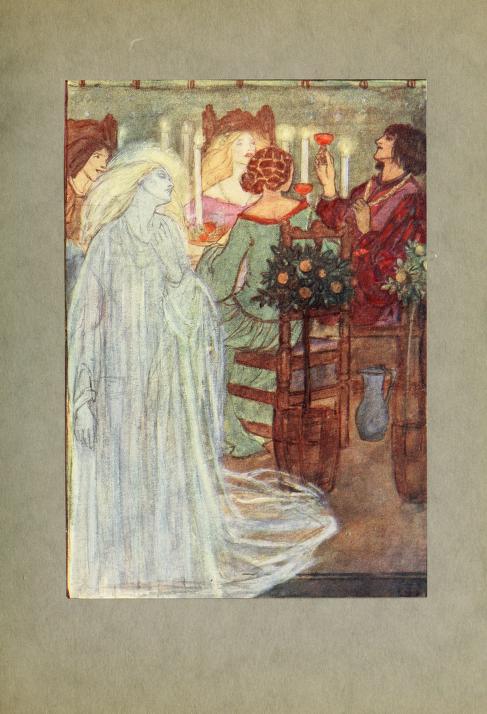 Rossetti’s “At Home” (1858) was initially titled “After the Picnic.” but when her brother Dante declared picnics frivolous and insisted on a change, Ms. Rossetti complied. It’s known Rossetti composed the poem after attending a real...
Picnicking in the Woods. Harper’s Weekly, Vol. II, September 4, 1858. Woodblock
Rossetti’s “At Home” (1858) was initially titled “After the Picnic.” but when her brother Dante declared picnics frivolous and insisted on a change, Ms. Rossetti complied. It’s known Rossetti composed the poem after attending a real...
Picnicking in the Woods. Harper’s Weekly, Vol. II, September 4, 1858. Woodblock
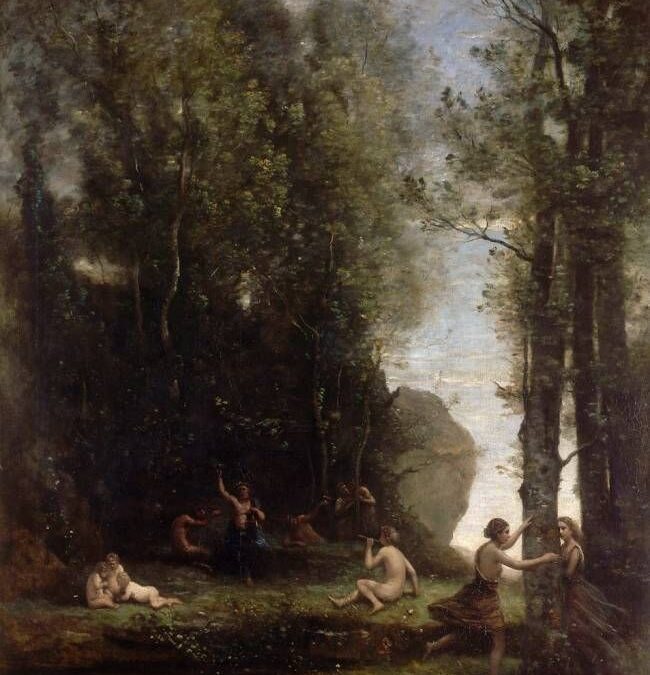 Corot’s Idylle is picnicky. Pan’s presence usually suggests some sort of sexuality or chaotic action, but the scene is a joyful but serene. Featured Image: Musée des Beaux Arts, Lille
Corot’s Idylle is picnicky. Pan’s presence usually suggests some sort of sexuality or chaotic action, but the scene is a joyful but serene. Featured Image: Musée des Beaux Arts, Lille
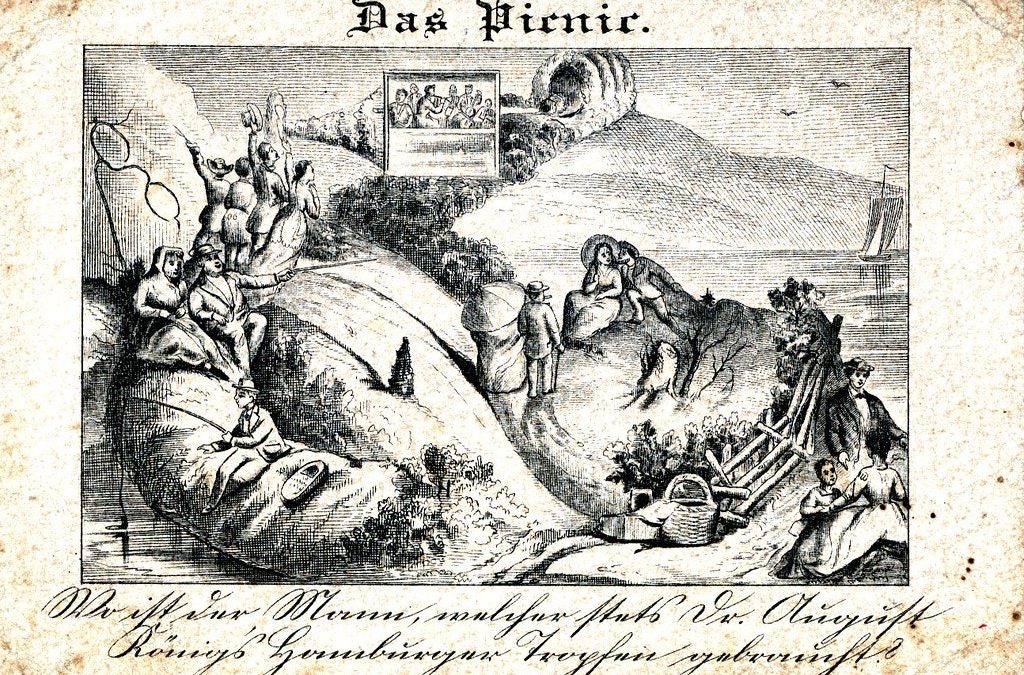 “Das Picnic” is an advertisement for Hamburger Tropfen, Dr. August König’s patent medicine, written in German by an American company in New Castle, Wisconsin. The ad’s image is a picture puzzle, and the legend is “Wo ist der Mann, welcher stets...
“Das Picnic” is an advertisement for Hamburger Tropfen, Dr. August König’s patent medicine, written in German by an American company in New Castle, Wisconsin. The ad’s image is a picture puzzle, and the legend is “Wo ist der Mann, welcher stets...
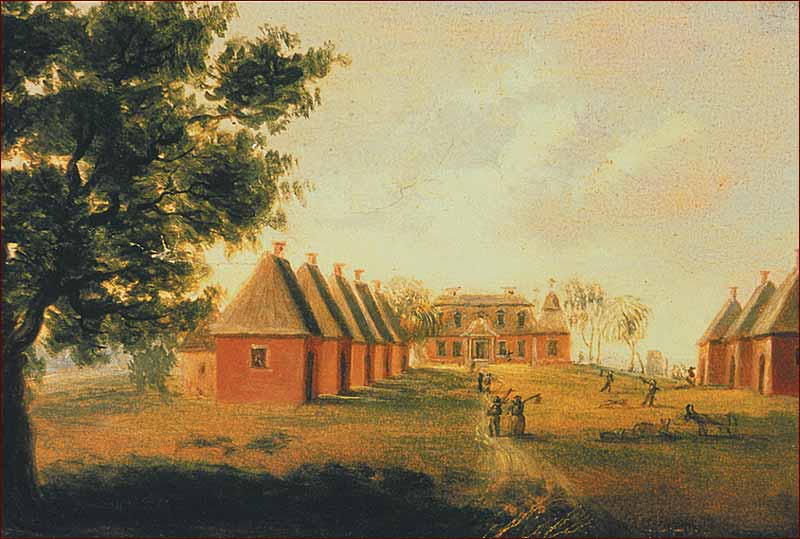 Coram’s View Of Mulberry in 1800 looks up to the rear of the house from the vantage point of “the street” because it was lined with slave quarters, of which houses are visible. Coram’s view suggests “the street” was a matter of...
Coram’s View Of Mulberry in 1800 looks up to the rear of the house from the vantage point of “the street” because it was lined with slave quarters, of which houses are visible. Coram’s view suggests “the street” was a matter of...
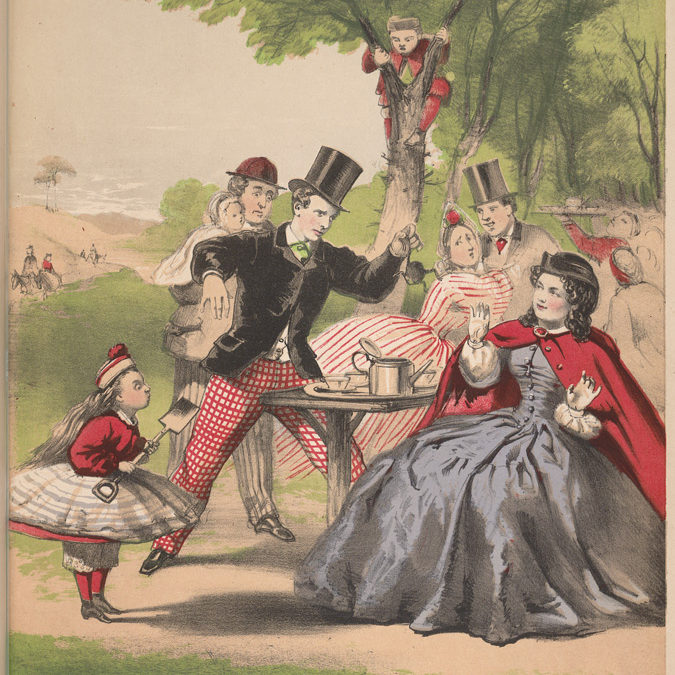 Williams’s Popular Song Hampstead Is the Place to Ruralise Hampstead Is the Place to Ruralise, All on a Summer Day (1861) is a comic hymn dedicated to the pleasures of Hampstead Heath. The euphemism “ruralizing,” like gypsying, had been in use since...
Williams’s Popular Song Hampstead Is the Place to Ruralise Hampstead Is the Place to Ruralise, All on a Summer Day (1861) is a comic hymn dedicated to the pleasures of Hampstead Heath. The euphemism “ruralizing,” like gypsying, had been in use since...
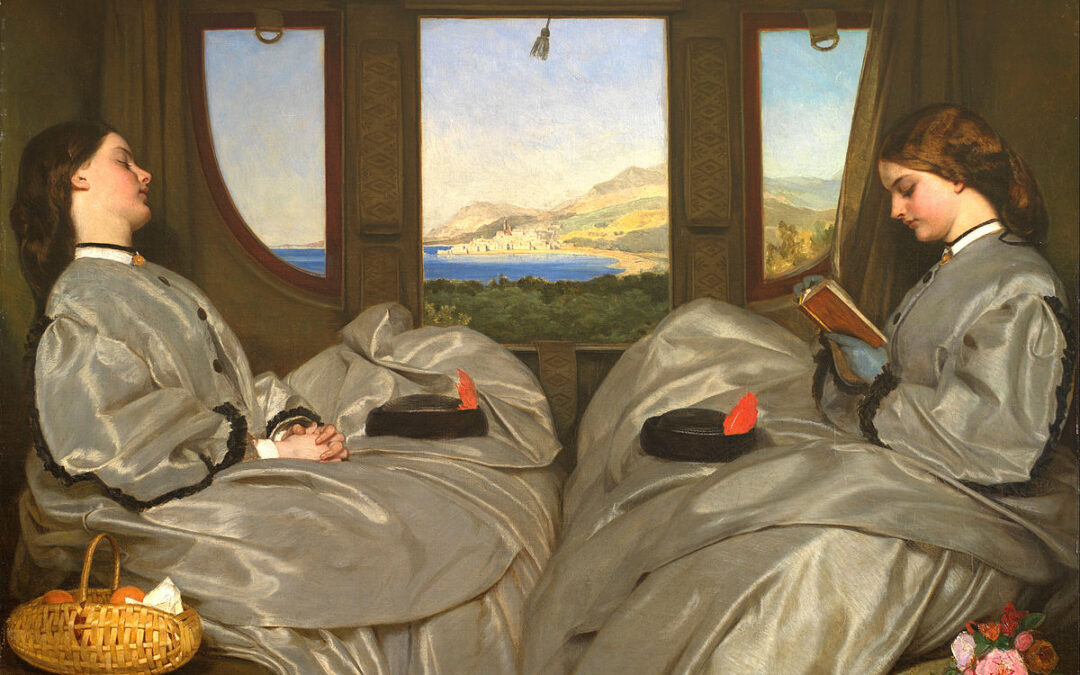 Egg‘s Traveling Companions is a testimony of the ease and comfort of train travel. The two elegantly dressed women, virtually mirroring images of each other, sit without even looking out of the window at the long view of the shoreline beyond. One reads the other...
Egg‘s Traveling Companions is a testimony of the ease and comfort of train travel. The two elegantly dressed women, virtually mirroring images of each other, sit without even looking out of the window at the long view of the shoreline beyond. One reads the other...
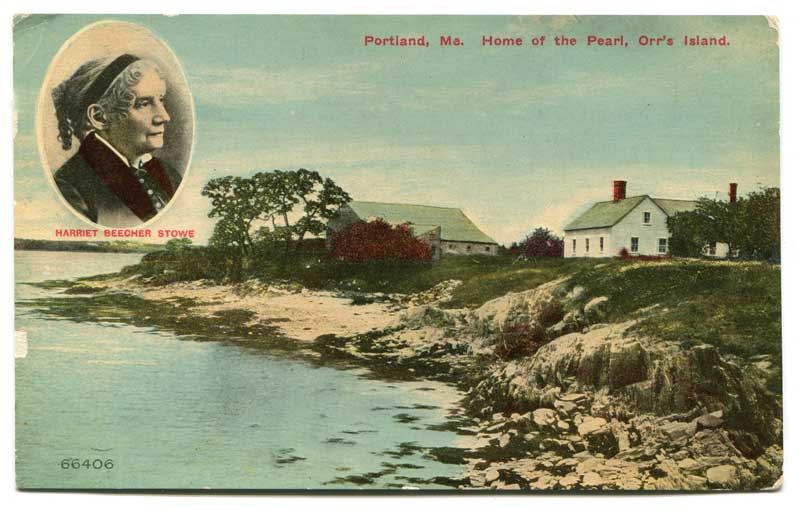 Stowe’s The Pearl of Orr’s Island was published ten years after Uncle Tom’s Cabin (1852) is a story of the people who speak in the vernacular of Maine, on the road to the Kennebec, below the town of Bath. Its basis is Shakespeare’s The Tempest,...
Stowe’s The Pearl of Orr’s Island was published ten years after Uncle Tom’s Cabin (1852) is a story of the people who speak in the vernacular of Maine, on the road to the Kennebec, below the town of Bath. Its basis is Shakespeare’s The Tempest,...
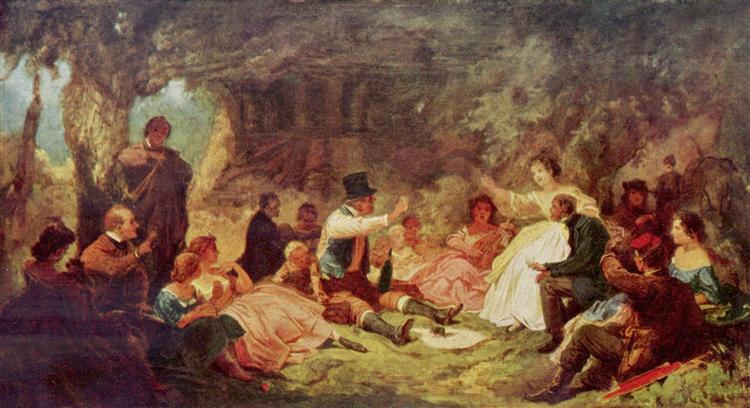 Spitzweg’s Dejeuner sur l’herbe, Das Picknick, aka Luncheon on the Grass, is a happy middle-class person in the country. They sit, relaxing and enjoying each other’s company. The central figure, a portly man, toasts a woman in white, perhaps a bride. The company rises...
Spitzweg’s Dejeuner sur l’herbe, Das Picknick, aka Luncheon on the Grass, is a happy middle-class person in the country. They sit, relaxing and enjoying each other’s company. The central figure, a portly man, toasts a woman in white, perhaps a bride. The company rises...










